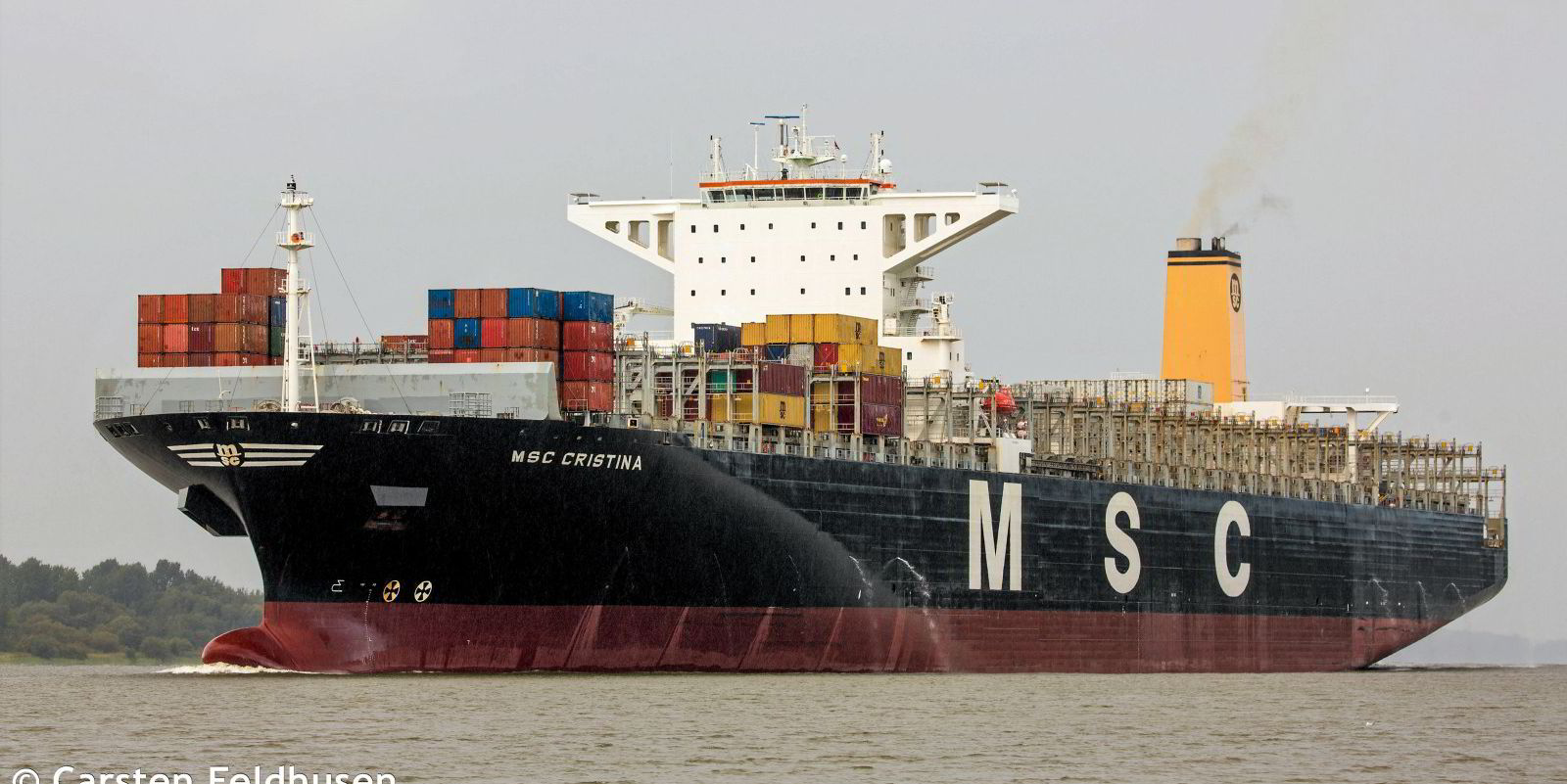Booming demand for ocean freight, port delays and equipment shortages are continuing to push container spot rates to new heights.
Rates from Asia to the US West Coast rose by over 13% to new high of $5,650 per 40-foot equivalent unit (feu), while those to the US East Coast remain just $120 short of record levels of $7,435 per feu, according to the Freightos Baltic Index (FBX).
Impressive rises were reported in the transatlantic which spiked by 23% to a record high of $4,299 per feu, nearly double their level just six weeks ago, Freightos research lead Judah Levine said in a note.
The spike was partly due to a shortage of ships as most capacity is already deployed on the booming transpacific and Asia Europe trades.
Ships have in recent months been transferred from smaller trade lanes to serve on the booming markets out of Asia.
That has not yet impacted on freight rates from Asia to north Europe which remain close to their all-time record at $8,345 per feu this week.
That is up 469% annually, with little sign of the market easing until the third quarter at the earliest, said Levine.
He added that shippers are paying significantly more in premiums in the hope of securing space and avoid having cargoes rolled.
There is little sign of demand slacking with imports into US container ports in the first half of the year expected to be a third higher than last year.
US ports handled 2.27m teu in March, according to the monthly Global Port Tracker report released by the National Retail Federation and Hackett Associates.
That was up 21% from February and set a new record for the number of containers seen during a single month since NRF began tracking imports in 2002.
The previous record was 2.21m teu set last October.
“This is where we see the “engine” driving the boom in container volumes into North America, as the US consumer continues to favour spending on goods versus spending on services,” said Danish analyst Sea-Intelligence.
No ships left
Increased demand, congestion and a lack of containers and available ships have conspired to push up rates in the transatlantic, according to Alphaliner.
Carriers have transferred as much capacity as possible to the booming Asia-Europe and transpacific trades.
That has meant there are no ships left to deal now with a surge in European exports to North America, Alphaliner said.
The research firm said average weekly Europe to North America capacity stood at 141,036 teu on 1 May, up only 1.4% compared with a year ago.
In comparison, average weekly capacity in the Asia to North America trade stood at a record high of 568,820 teu, a massive 47.6% increase compared to 1 May 2020.
The current weekly offering on the Asia-Europe trade is up 24.6% on a year-on-year basis, Alphaliner added.







